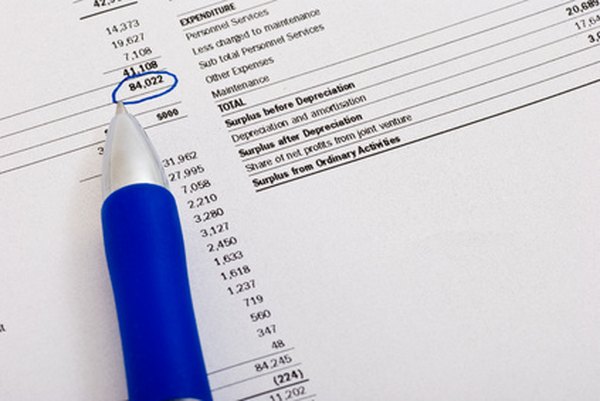What Can Affect a Return on Common Stockholders' Equity?
Return on equity reflects a company's competitive advantage.
financial report image by PaulPaladin from Fotolia.com
Return on common stockholders' equity, commonly known as return on equity or ROE, measures a company's ability to generate a return on the investment of common stockholders. ROE is the ratio of net income to average common equity and numerous economic factors can affect the ROE including changes in net income and fluctuations in equity. Investors use ROE in combination with other financial ratios to analyze and compare different companies in an industry.
Tip
Inconsistent profits, excess debt as well as negative net income are all factors that can affect the return on common stockholders' equity.
Exploring the Basics of ROE
Preferred shares and dividends are not part of the ROE calculations. If a company has preferred shares outstanding, you would subtract preferred dividends from net income to get the net income attributable to shareholders. Average common equity is the average of the starting and ending common stockholders' equity for a reporting period, which is usually a quarter or a year.
Common stockholders' equity is the stockholders' equity on the balance sheet minus the preferred stock par and paid-in capital. Par value is the nominal or stated value, while paid-in capital is the amount in excess of par received when issuing the shares.
The Impact of Net Income
ROE rises and falls with net income. A combination of higher revenues and lower costs usually results in higher net income. Top-line revenue growth may lead to higher net income, as long as costs remain the same as a percentage of revenue. If costs increase at the same pace as revenues, the additional revenue dollars will not flow through to the bottom line.
Management also could maintain profit margins by restructuring operations and cutting costs, especially in a period of declining revenues. Conversely, a combination of falling revenues and rising costs could mean lower net income and even losses.
The Influence of Stockholders' Equity
ROE rises when average common equity falls and falls when equity rises. The components of common equity include retained earnings and the proceeds from issuing common stock. The retained earnings amount is the accumulated net income after paying common and preferred dividends.
If a company issues common shares or reduces its dividend payments during a particular reporting period, the average equity would increase. This would mean a lower ROE, assuming that the net income stays the same. Conversely, if the company buys back its stock or increases its dividend payments, average equity would fall and ROE would rise.
Using an Example
If the stockholders' equity is $4 million and $5 million at the beginning and end of a quarter, respectively, then the average stockholders' equity is $4.5 million. If the net income is $1 million for the quarter, the ROE is $1 million divided by $4.5 million, or about 22 percent. If the net income rises to $1.1 million, ROE will increase to $1.1 million divided by $4.5 million, or about 24.5 percent.
If average common equity rises to $5.5 million because of an additional share issuance, the ROE would fall to $1.1 million divided by $5.5 million, or 20 percent. In other words, management must use shareholder capital efficiently to sustain ROE.
References
Resources
Writer Bio
Based in Ottawa, Canada, Chirantan Basu has been writing since 1995. His work has appeared in various publications and he has performed financial editing at a Wall Street firm. Basu holds a Bachelor of Engineering from Memorial University of Newfoundland, a Master of Business Administration from the University of Ottawa and holds the Canadian Investment Manager designation from the Canadian Securities Institute.

